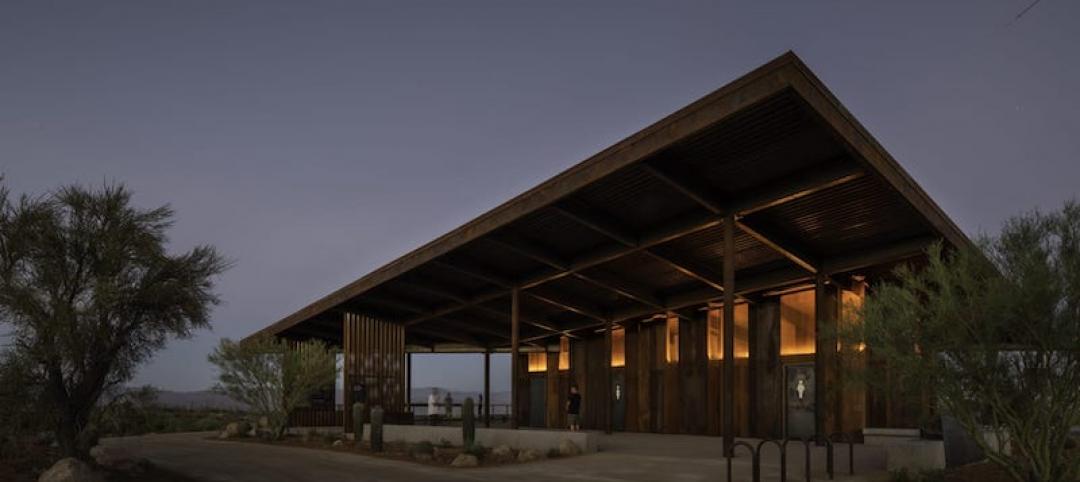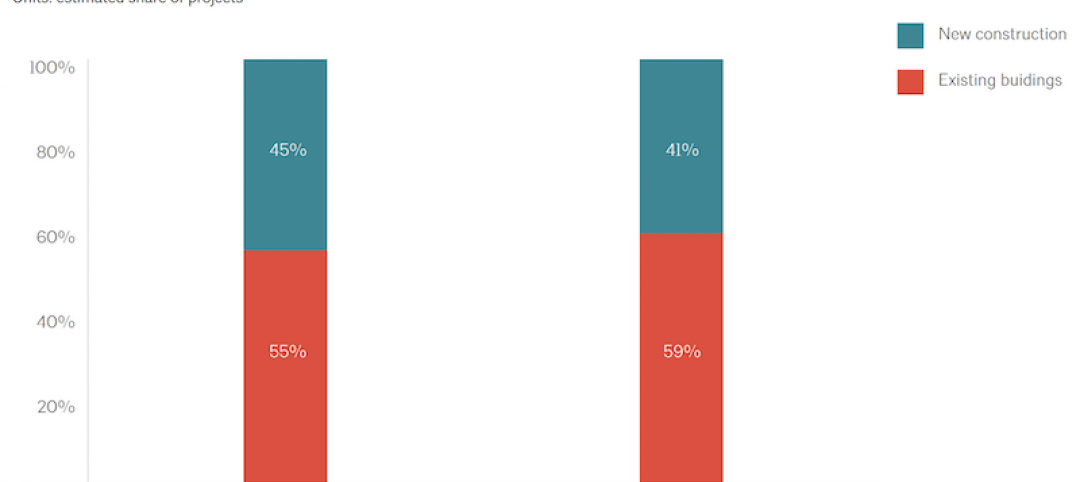The National Council of Architectural Registration Boards (NCARB) has accepted proposals from over a dozen architecture schools to implement an integrated path to licensure within academic programs accredited by the National Architectural Accrediting Board (NAAB).
This initiative allow students enrolled in an NCARB-accepted path to complete the requirements for architectural licensure at the time of graduation. The NCARB Integrated Path initiative invites programs accredited by the NAAB to propose approaches that would result in completing the requirements of the Intern Development Program (IDP) and the opportunity to take each division of the Architect Registration Examination (ARE) before graduation. Passing all ARE divisions prior to graduation is not required.
In its inaugural effort, the NCARB Integrated Path initiative has solicited statements of interest from all schools with NAAB-accredited programs and then invited all with accredited programs to submit proposals, which were received this past June. The review of these proposals was conducted by the NCARB Licensure Task Force (LTF), composed of interns/recently licensed architects, state licensing board members and executives, academic deans and instructors, and non-architect public members, as well as leaders representing the American Institute of Architects (AIA), the American Institute of Architecture Students (AIAS), the Association of Collegiate Schools of Architecture (ACSA), and the National Architectural Accrediting Board (NAAB).
NCARB will respond to each school with feedback as to how their proposal is or could become acceptable before releasing the names of the accepted programs. All programs that submitted proposals will be coached as to next steps including modifications necessary to move forward toward implementation. NCARB will also engage its state licensing board members regarding regulatory changes to allow access to the ARE prior to graduation.
After providing further feedback to the proposing schools, NCARB will release the names of the initial group of accepted programs. Programs needing more development will be encouraged to resubmit proposals utilizing the feedback from the Task Force. A new RFP for the second round of participation will launch in early 2016 and will be repeated on an annual basis, to be managed by a new Integrated Path Evaluation Committee appointed by the NCARB President Ward and include diverse geographic, age, demographic, and collateral perspectives.
Related Stories
Wood | Jul 16, 2021
The future of mass timber construction, with Swinerton's Timberlab
In this exclusive for HorizonTV, BD+C's John Caulfield sat down with three Timberlab leaders to discuss the launch of the firm and what factors will lead to greater mass timber demand.
Multifamily Housing | Jul 15, 2021
Economic rebound leads to record increase in multifamily asking rents
Across the country, multifamily rents have skyrocketed. Year-over-year rents are up by double digits in nine of the top 30 markets, while national YoY rent growth is up 6.3%. Emerging from the pandemic, a perfect storm of migration, enhanced government stimulus and a hot housing market, among other factors, has enabled this extremely strong growth.
AEC Business Innovation | Jul 11, 2021
Staffing, office changes at SCB, SmithGroup, RKTB, Ryan Cos., Jacobsen, Boldt, and Adolfson & Peterson
AEC firms take strategic action as construction picks up steam with Covid openings.
K-12 Schools | Jul 9, 2021
LPA Architects' STEM high school post-occupancy evaluation
LPA Architects conducted a post-occupancy evaluation, or POE, of the eSTEM Academy, a new high school specializing in health/medical and design/engineering Career Technical Education, in Eastvale, Calif. The POE helped LPA, the Riverside County Office of Education, and the Corona-Norco Unified School District gain a better understanding of which design innovations—such as movable walls, flex furniture, collaborative spaces, indoor-outdoor activity areas, and a student union—enhanced the education program, and how well students and teachers used these innovations.
Multifamily Housing | Jul 7, 2021
Make sure to get your multifamily amenities mix right
One of the hardest decisions multifamily developers and their design teams have to make is what mix of amenities they’re going to put into each project. A lot of squiggly factors go into that decision: the type of community, the geographic market, local recreation preferences, climate/weather conditions, physical parameters, and of course the budget. The permutations are mind-boggling.
Industrial Facilities | Jul 2, 2021
A new approach to cold storage buildings
Cameron Trefry and Kate Lyle of Ware Malcomb talk about their firm's cold storage building prototype that is serving a market that is rapidly expanding across the supply chain.
Multifamily Housing | Jun 30, 2021
A post-pandemic ‘new normal’ for apartment buildings
Grimm + Parker’s vision foresees buildings with rentable offices and refrigerated package storage.
Architects | Jun 30, 2021
Perkins Eastman joins forces with MEIS
MEIS’ work on stadiums and entertainment centers spans the globe with state-of-the-art designs in the U.S., Europe, Asia, and the Middle East.
Architects | Jun 25, 2021
AIA announces Small Project Award recipients
Now in its 18th year, the AIA Small Project Awards program recognizes small-project practitioners for the high quality of their work.
Architects | Jun 24, 2021
Post-pandemic, architects need to advocate harder for project sustainability
An AIA-Oldcastle report looks closer at the coronavirus’s impact on design and construction

















